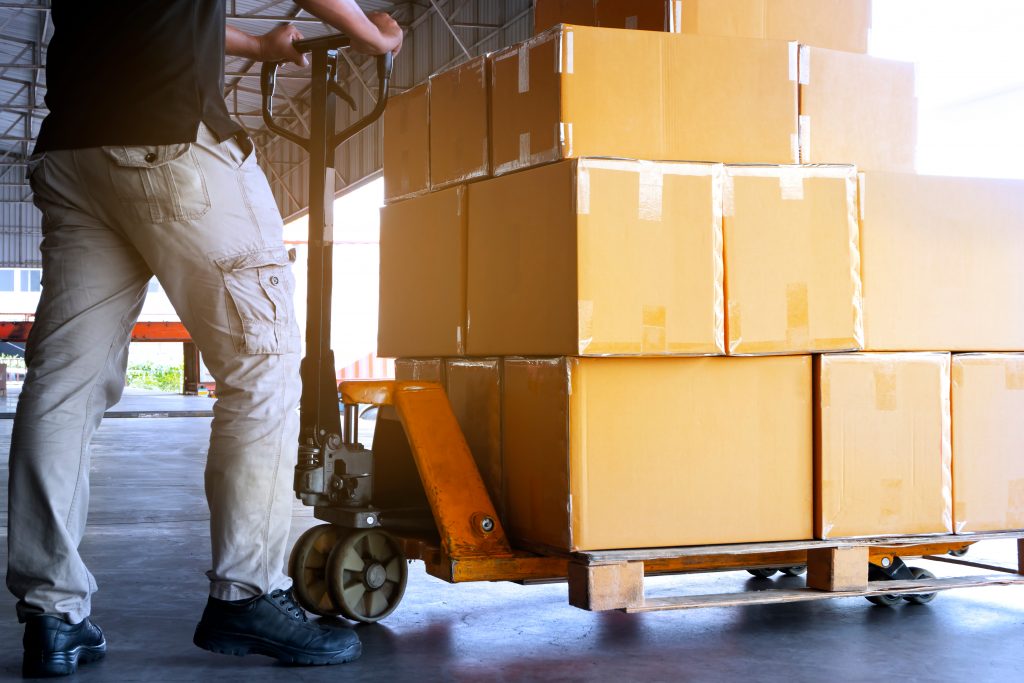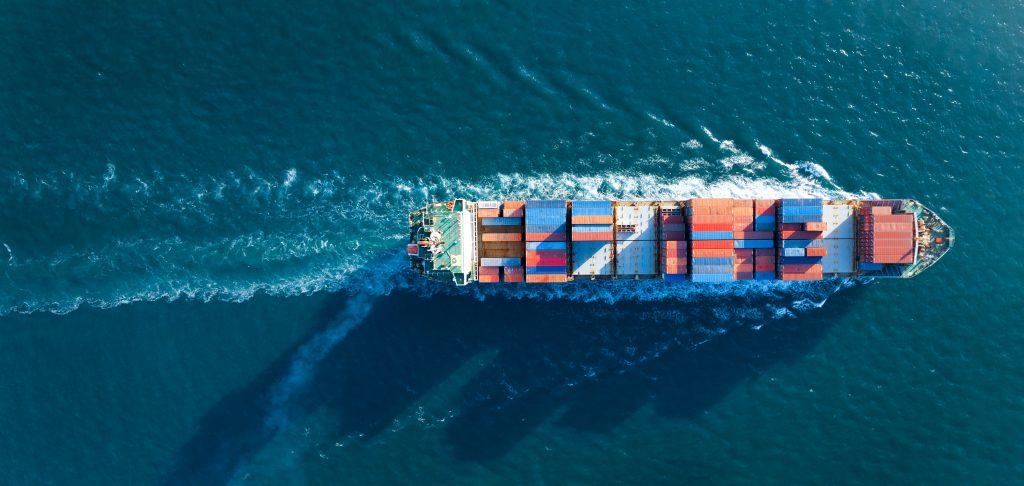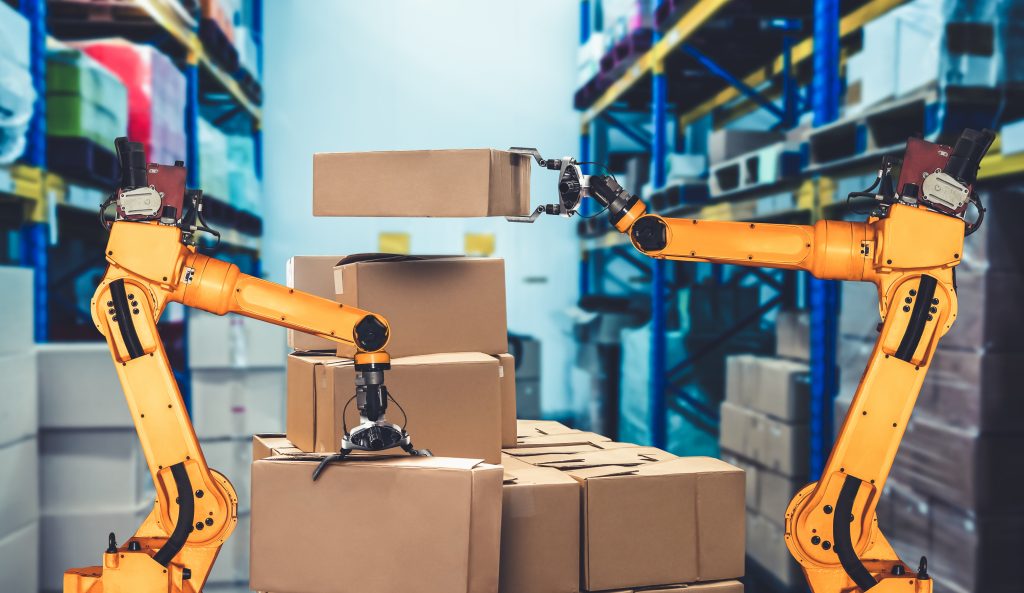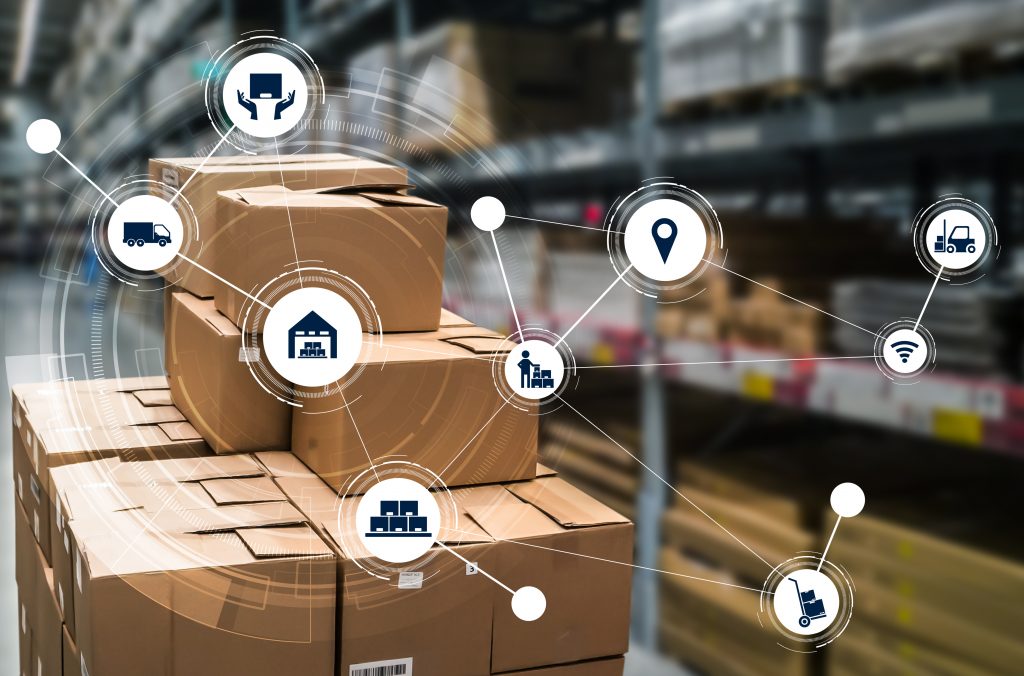Whether your warehouse is part of a hyper-regional operation, just one link in a global supply chain, or somewhere in-between, the shift in recent international trade policies affects every corner of the industry. The implementation of new tariffs will redefine the supply chain management for years to come. For forward-thinking organizations, this new landscape can serve as a catalyst to build industry-leading operations, future-proofed for an ever-shifting regulatory reality.
THE NEW RULE OF SUPPLY CHAIN MANAGEMENT

The governing rule of supply chain management post-2024 is that predictability is behind us. As countries across the globe announce new tariff policies, a company that wants to build for long-term success must look to future-proof their business.
Tariffs are a tax imposed by one country on goods and/or services originating in another country. They are implemented as a means to make a country’s domestically produced goods and services more desirable or competitive to consumers than the foreign alternatives. While trade policies were once often negotiated and implemented at a slower, more bureaucratic pace that gave companies ample time to plan for, in the post-2024 market we now see global policies more rapidly implemented, requiring companies to strategize and innovate for an ever-shifting landscape.
SAFETY STOCKING, SMARTLY

When you are unsure what the price of a product or part might be next week or next month, the desire to increase inventory levels to provide protection for unexpected cost increases is natural. While upping your inventory can mitigate a swing in import costs, it can also expose you to a number of carrying cost risks, from obsolesces and deterioration to physical storage, handling and even insurance costs.
Using a state-of-the-art WMS solution to run advance analytics, a company can determine the right amount of safety stock that will allow them to respond to sudden shifts in the value of goods while not exposing themselves to operating costs that will undermine the benefits of a forward stocking solution.
BUILDING A MODULAR SUPPLY CHAIN
If your company is reacting to a shift in tariff policies, you are always playing catch-up. A future-proof supply chain going forward is one where you can swap in different components within your supply chain as economic realities change.

- Diversifying Suppliers: where your company’s business allows, sourcing and building relationships with multiple suppliers who can fulfill the same stock requirements gives you the ability to increase or decrease the reliance of any one supplier as new regulations go into effect.
To achieve this, a business requires a robust WMS solution that can track your receiving operations thoroughly, from the amount you are ordering and spending with each supplier to the speed with which they are fulfilling orders. This will allow you to budget and schedule an increased or decreased level of orders through any one supplier while seeing on your digital dashboard which alternative suppliers can quickly make up shortfalls. - A Robust Partner Onboarding System: Whether new tariffs affect materials or goods your warehouse needs to receive or the markets in which you ship to, your bottom line will inevitably depend on the speed at which you can pivot. While old paper and pen or manual spreadsheet methods of running a warehouse were a determinant before the new realities of global economic policies, they are a death knell to any business post-2024.
To be competitive, a warehouse requires a WMS that is designed for quick onboarding of new partners as well as new distribution routes. - Domestic Volume-Based Pricing: In the past, many businesses have relied on products or materials that can be obtained cheaper from foreign suppliers. As tariffs levy an import tax on these goods, they may become as expensive or more expensive than buying domestic goods. But pivoting to domestic suppliers is often not without an increase in the bottom line.
To maintain your company’s budget, it may be advantageous to set-up volume discounting deals with domestic partners, wherein the price per unit decreases with each increase in the number of units bought. Well-planned and negotiated volume-based pricing can make a domestic-first business strategy work, however like safety stocking, it requires a WMS with real-time data to ensure an unseen carrying cost is not waiting for you beneath the surface of any bulk deal. - Friendshoring: Say you import widgets from China but you are now hit with a new widget tariff when you import from their factory directly to your facility. In this hypothetical scenario, let’s say Thailand has no import tariffs on widgets from China and in turn your country of operation has no import tariffs on Thailand. Now, by shipping to a neutral third country, you can get your widgets at the same rate without added import taxes.
Friendshoring, while a simple strategy on the surface, requires a WMS solution that can be used by facilities and business partners globally to ensure not only that orders are being fulfilled from the beginning to the end of the supply chain at a rate that meets your customers demand, but that no leg of the supply chain is carrying too much product overhead should new tariffs cut-off a Friendshoring route.

FACTOR IN NEW SHIPPING DELAYS
Ahead of new tariffs being introduced, we see a bottleneck at ports of entry as companies race to stockpile goods before new levies are implemented. As tariffs go into effect, a business must then factor in longer compliance inspection times and in turn, longer stays for shipments at bonded warehouses awaiting customs clearances.
Using an advanced WMS with reporting and forecasting tools, a company has real-time visibility of any delay within the supply chain, allowing for quick pivoting to optimize routes and inventory management so customers are not left waiting.
MITIGATE PRICE INCREASES THROUGH EFFICENCY
A company may find their operating costs going up to be an unavoidable consequence as import and export rules put new strains on the bottom line. To help mitigate these new costs, a company should look at what they can control – their internal operations.

Using the machine learning analytics of an advanced Warehouse Management System like K.Motion Warehouse Edge, a company can invest in new ways to streamline receiving, storing, picking, packing, and shipping. Finding cost optimization strategies within daily operations, whether it be using AI to discover unseen slotting efficiencies or implanting technology to reduce mis-shipments, allows a company to save money in controllable areas while spending more on product or part procurement or distribution. Finding savings that offset new expenses can allow a business to keep prices at the same of comparable levels, avoiding alienating potential customers with inflationary price tags.
ESTABLISH A PLANNING AND RAPID RESPONSE COMMITTEE
Outside of monthly or quarterly meetings, a lot of companies fall into the trap of siloing their departments. Unfortunately, this leaves everyone only seeing their piece of the bigger picture. In the past, this could be frustrating, but within the new tariff paradigm, it can be fatal for an organization.
With quickly shifting trade law and duties across the globe, a forward-thinking company should establish a committee that brings together the financial, marketing, and supply chain teams to run simulations and tabletop exercises. With a robust WMS that tracks every facet of your business from the customer placing an order to the speed at which it is being fulfilled, a strategic plan can be built around variables that go well beyond your warehouse floor.
Say, for instance, you sell a product that data shows is highly popular in one region of the country during warm weather months. Without providing all key-business functions a seat at the table, your procurement team may opt to overstock the item to get ahead of possible new tariffs while ensuring your distribution facility is prepared for the seasonal demand.
At the same time, a sales team on the ground in the region that makes up the bulk of orders for said product may be tracking a key manufacturing sector of the region being hard hit by a separate tariff. While this manufacturing sector has nothing to do with your supply chain directly, shift reductions or plant closures could change the spending intentions of consumers. Without regular data-driven strategy sessions, departments are left working in the dark.

A CONSULTING PARTNER THAT THINKS GLOBALLY
Whether your company operates internationally or strictly domestically, there is no avoiding the effect of the new tariff reality on the supply chain. That’s why a company like Impact WMS is a vital partner in today’s world. Providing logistical support and WMS solutions to partners on an international scale, our team of experts is trained to understand the ever-shifting global economic realities so you don’t have to become an expert in global trade law. Working together, we can build a digital safety net that will incorporate the current tariff situation, future-proof solutions to potential new tariffs, as well as strategies and early-warning systems for global supply chain disruptions and domestic transportation issues.
Together, we can build a WMS system that is designed around analytics that will trigger a shift to alterative suppliers or routes when necessary.
As domestic and global trade situations shift at a rate never before seen in human history, having the systems in place to plan for any future is essential for an operation to stay profitable and resilient.
